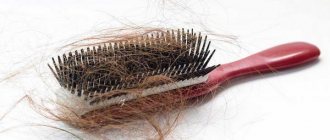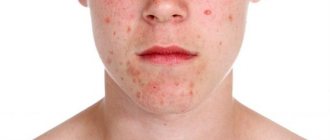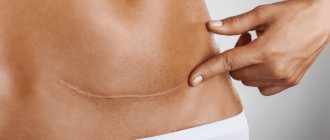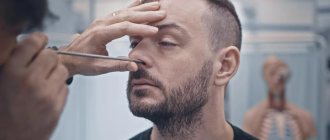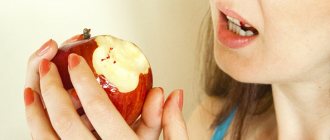Noise in the head is a symptom that occurs in 10-15% of the population. A person hears sounds in the absence of a source of irritation. The noise is heard only by the individual himself. Patients suffer for years because they do not receive an adequate solution to the problem. Tinnitus disrupts the usual way of life, affects the ability to work, makes it difficult to pay attention, and impairs sleep. In some cases, the lack of timely assistance leads to disability.
Kinds
The work of the body is accompanied by the appearance of somatic or vibrator sounds. They appear during breathing, heartbeat, muscle contraction, and blood circulation. Somatic sounds become perceptible under certain conditions:
- heightened perception;
- noticeable increase in vibrations;
- the appearance of nonspecific noises.
In otolaryngology, the following groups of sounds are distinguished:
- vascular;
- noises of the external and middle ear;
- muscular;
- peripheral;
- centrally sensory.
Noises have a number of characteristics. They can be unilateral and bilateral, constant and periodic, monotonous and pulsating, high-frequency and low-frequency, intense and mild.
The severity of discomfort varies. According to the classification of A.P. Velitsky, there are 3 degrees of noise:
- weak;
- average;
- strong.
At the initial stage, the patient may not notice the discomfort, but only pays attention to it during the examination. That is, this is not the main symptom that led to seeking help.
The average degree of severity manifests itself in complaints of noise, but the patient does not pay attention to it. In severe cases, noise in the head and ears is the main symptom. A person feels constant discomfort, which worsens the quality of life.
In clinical practice, there are several classifications. According to E.R. Fowler, there are 2 types of tinnitus:
- vibrator (objective, related to the work of organs and systems);
- non-vibratory (subjective, resulting from irritation of the auditory nerve).
Objective noise occurs as a result of vascular and muscular pathology.
Vascular murmurs are characterized by a number of signs:
- permanence;
- synchronization with the pulse;
- changes in intensity depending on the degree of compression of blood vessels and the position of the head.
Increased discomfort is associated with increased blood pressure.
Muscle noise is not constant. The sounds that a person hears are similar to the chirping of a grasshopper. Some describe them as clicking.
Subjective noise is perceived as more painful. The sounds that the patient hears do not carry any information. The brain tries to decipher them, but to no avail. As a result, a person feels fear and anxiety.
Preventing ringing in the head
Prevention and treatment of tinnitus is possible at home. For this, a method such as masking is used. To distract yourself from the noise, it is recommended to use pleasant sounds:
- Birdsong;
- sounds of the forest;
- rain;
- the sound of train wheels;
- falling waterfall and others.
As a rule, it is not necessary to use disguise all the time. It is advisable to do this in cases where you need to be distracted, relax, immerse yourself in work, calm down or fall asleep. It is recommended to come up with “rituals” for yourself using aromatherapy and other relaxation methods.
In addition, it is worth periodically looking for new sounds and diversifying your home collection. Otherwise, the habituation effect will work, and the disguise will be ineffective.
Another preventive measure is to avoid concerts, open areas with loud music, highways, etc. When listening to music or movies, you need to set the volume within a reasonable range. This is especially important for fans of mp3 players and other devices with headphones.
Causes
Noise in the head appears against the background of the development of many diseases. In some cases, it is not a harbinger of any dangerous condition. Endogenous sounds appear as a result of contraction of muscles and ligaments, crunching of joints, and blood pulsation.
Objective noise occurs due to several reasons:
- neuromuscular;
- muscular-articular;
- vascular.
Tinnitus is the result of the development of the following pathologies:
- vascular atherosclerosis;
- hepatitis A;
- diabetes mellitus;
- hypoglycemia;
- hypo- and hyperthyroidism;
- diseases of the outer, middle, inner ear;
- sulfur plugs;
- otitis;
- otosclerosis;
- Meniere's disease;
- hearing loss;
- acoustic and barotrauma;
- malignant neoplasms of the cerebellopontine angle, brain;
- intoxication;
- pathologies of the cervical spine;
- psychoneurological diseases;
- chronic fatigue syndrome;
- stress.
Subjective noise in some cases is the result of industrial factors, exposure to a sharp loud sound.
Elderly people more often suffer from noise in the head due to cardiac dysfunction, high blood pressure, and age-related changes.
Character of the ringing
Questioning a patient who complains about this symptom helps in diagnosing the underlying disease that caused it. To determine the disease, an otorhinolaryngologist asks the patient leading and clarifying questions to determine the nature of the ringing.
- A monotonous noise resembling a whistle, hissing, squeaking or buzzing.
- Multicomponent noise - resembles the ringing of a bell, voice timbre, and various musical elements.
Noise can be of vibrational or non-vibrational nature, which directly affects the nature of the noise.
- Vibration ringing - occurs mechanically due to the anatomical formations of the inner ear and cerebral vessels. This noise may be objective.
- Non-vibrational - always subjective, occurs as a result of improper functioning of the conductive nerve fibers in the central nervous system. May occur with mental disorders.
Which doctor treats
Since noise in the head is a symptom of ear diseases, as well as neurological pathologies, if an unpleasant symptom appears, you should contact an otolaryngologist or neurologist.
Why suffer from noise in your head if you can turn to a specialist at the Kuntsevo Medical and Rehabilitation Center to solve the problem?
IMPORTANT! You should not self-medicate, because noise in the head is a neurological symptom that may indicate the development of serious pathologies.
Our neurologist and otolaryngologist will conduct a detailed study of the causes of the symptom and indicate a direct path to solving the problem and getting rid of noise in the head. You just need to make an appointment with our doctor, who will not only help you get rid of the symptom, but will also describe a detailed course of rehabilitation.
Sign up
Nervous system diseases
There are a lot of them! This includes multiple sclerosis, meningitis, epilepsy, and a consequence of age-related changes (such as Parkinson's disease)... Dozens of diagnoses, many of which are very serious, but they still need to be made. Noise, humming and whistling in the ears are therefore important symptoms. If they bother you or your loved ones, and the therapist or other specialist to whom you turned for help “waves it off”, saying that it’s tinnitus, a sound for no reason... perhaps you should first look for a more meticulous doctor. There is always time to decide that the sounds come from nowhere and are harmless.
By the way, frequent stress and overwork lead to problems with the nervous system. Maybe before you get an appointment, you should try to at least get some rest? Take a time out, be quiet and in nature. If the intrusive sounds disappear at this time, you are on the right track. Stress less and rest more. You can ask your doctor to prescribe sedatives, but this is not necessary.
Treatment methods
A patient who seeks help undergoes an examination, on the basis of which he is prescribed treatment. There are 2 groups of methods: conservative and surgical. Preference is given to measures that include medicinal, physical, and psychotherapeutic methods of influence.
To reduce noise, patients are prescribed vasoactive, nootropic drugs, vitamins, antidepressants, tranquilizers, muscle relaxants, anticonvulsants, anesthetics, antihistamines, vasodilators, diuretics, homeopathic remedies, etc.
Physical methods include:
- phototherapy;
- electrotherapy;
- faradization;
- iontophoresis;
- ultrasound;
- mechanotherapy;
- reduction;
- reflexology.
Tinnitus Retraining Therapy (TRT) and cognitive behavioral psychotherapy are used as psychotherapeutic techniques.
Surgical tactics are used in case of significant pathological changes in the auditory organ.
Diagnostics
Diagnosing the symptom of tinnitus is important. Since the symptom may be associated with serious diseases. The intensity of the noise and its location, as well as its duration, are important in diagnosis.
Ringing in the right ear causes and treatment
In this case, the ringing is most likely associated with diseases such as otosclerosis, otitis interna, the presence of a foreign body in the outer ear on the right side, or damage to the cerebral vessels. Ringing in the right ear can be constant or periodic; the periodic appearance of a symptom speaks in favor of the vascular component of the disease, for example, in atherosclerosis and hypertension, but constant noise speaks in favor of otosclerosis and disorders of the nervous system. Why is there a ringing in my left ear? The reasons will be the same as with the right one. To clarify the diagnosis, the specialist will necessarily collect an anamnesis, examine using otoscopy, and determine bone conductivity using a special medical tuning fork. To clarify the diagnosis, special additional research methods are sometimes required, such as:
- Magnetic resonance and computed tomography - allows you to determine the degree of damage to the anatomical structures of the inner and middle ear;
- Tone threshold audiometry - in this study, an audiogram is compiled, which can be used to judge the degree of perception by the central nervous system of various sound stimuli;
- Angiography of cerebral vessels - allows you to determine the degree of damage to the arteries.
Often, to establish an accurate clinical diagnosis, it is sufficient to determine the accompanying set of symptoms that help in differential diagnosis.
Rehabilitation and lifestyle restoration
Sound therapy is the main form of supportive treatment. Experts use audio maskers that reproduce environmental sounds. They distract from the main noise and improve the process of falling asleep.
Listening to musical works with certain acoustic characteristics has a beneficial effect on the body.
Some patients note an improvement in their condition after listening to the sounds of a departing train, rain, dripping water, or a washing machine.
Practical advice
If you experience ringing in the ears, and even more so it bothers you and interferes with your activities, you should not delay in contacting a specialist for professional help, otherwise you may miss the progression of a serious disease that may be accompanied by ringing in the ears. Only a specialist - an otorhinolaryngologist will be able to accurately determine the cause of tinnitus and plan subsequent treatment. By the way. Following the advice of your doctor is a prerequisite for effective relief from an unpleasant symptom. Take care of your body and health, be happy!
How to relieve an attack?
With vasospasm and significant circulatory impairment, severe pain occurs, noise and pulsation in the head interfere with work. You can alleviate the condition using the following methods:
- taking painkillers and antispasmodics - helps reduce pain;
- the use of local and systemic anti-inflammatory non-steroidal drugs - reduce pain, can remove pinched nerve endings, relieving inflammation;
- massage – helps relieve neck muscle spasms and eliminate tension.
With these measures you can get rid of the symptoms of cervical osteochondrosis, but only temporarily. The disease must be treated, and complex therapy is required.
IP – LYING ON YOUR Stomach
- Stretch your arms forward without lifting your chin from the floor, raise your legs, spread them, connect them, then lower them. Repeat 4-6 times.
- “Swimming” - raise your upper body and perform a movement with your arms as if swimming, without touching the floor with your hands. 4-6 repetitions of 4 movements on each hand.
- Hands in a “lock” behind your head, bend over 4-6 times.
- “Wings” - raise your arms and torso above the floor, spread your arms to the sides and swing them up and down 6 times
- Rest.
IP – LYING ON YOUR BACK
- Arms extended behind the head, stretching in four counts. Repeat 6-8 times.
- Arms are extended behind the head, without lifting your hands from the floor, raise your head and look at your outstretched socks. Repeat 4-6 times
- “Bicycle” - put your hands under your head, legs bent, 3 sets for a count of 10.
- Legs bent at the knees, straighten your legs up, spread them apart, then connect them and lower them down. Repeat 6-8 times.
- Diaphragmatic breathing: inhale - inflate the stomach, exhale - draw in the stomach, 6-8 times.
Why does my ears ring for a long time after an allergy to wasps?
The most dangerous allergic reactions to celandine, St. John's wort, Hymenoptera, because:
- the lining of the brain swells;
- the Eustachian tube narrows locally unevenly;
- under the pressure of edematous tissues of the nasopharynx, the cartilages of the nose are slightly deformed, and the cartilages of the auricle are pinched.
In these conditions, you need to drink a moderate amount of fluid. Give preference to fermented milk products. Drink 30-50 ml every 10-15 minutes to prevent nausea and provide access to fresh air. Avoid overheating and hypothermia - the expansion and contraction of blood vessels will increase the noise effects. Avoid physical activity. Walking in a familiar environment, changing the flora can lead to an asthmatic attack.

